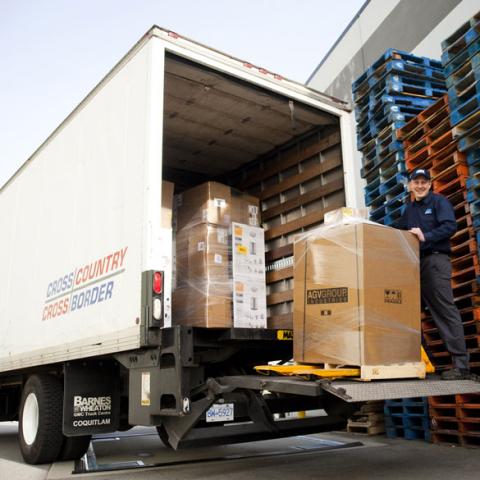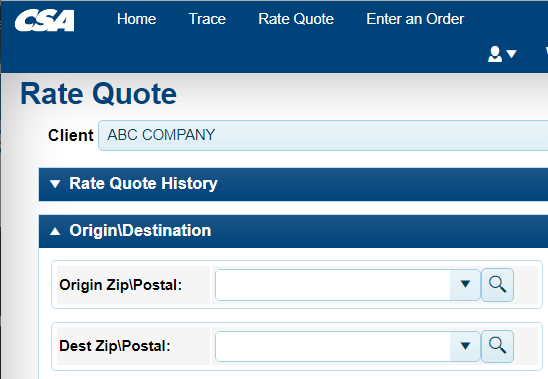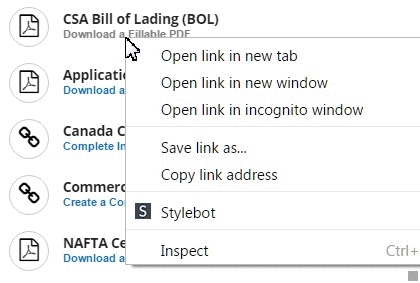How to Improve Warehouse Safety: Unloading and Loading
Unloading and loading cargo from trucks is no easy job, and even seemingly minor mistakes can put people or freight at risk. Many companies refine their processes and train crews to take the necessary safety precautions.
While warehouse workers or drivers typically handle loading freight, unexpected events always seem to arise in the logistics industry. That’s why everyone in the company must be thoroughly trained in the official truck loading and unloading procedures. Educating your teams will enable them to work together safely and efficiently.
To help you understand the importance of implementing truck loading and unloading protocols, let’s explore some of the most significant safety risks and what you can do to keep your team safe.
The Importance of Proper Unloading and Loading Procedures
Before we delve into solutions, let’s first understand the gravity of the consequences. Not having proper warehouse truck loading and unloading protocols introduces risk to your freight, trucks, and, most importantly, your employees.
There are two main areas you should focus your efforts:
- Reducing Safety Risk for Employees – Your employees work hard but must work smart too. Without proper training and safety measures, unloading and loading can quickly become dangerous and lead to severe accidents. Common injuries include sprains, muscle strains, falls, bruises, cuts, spinal injuries, and head trauma. These injuries most commonly result from the improper lifting of cargo, inept handling of machinery like forklifts, incorrect securing of cargo, falls from loading docks, spills and clutter, or poorly stacked materials.
- Minimizing Risk of Damaged Freight or Property – Naturally, the safety of your employees comes first. But we shouldn’t overlook the risk to your company’s reputation and bottom line. Improper warehouse loading and unloading procedures can lead to damaged inventory, delivery delays, missing items, and more. This can lead to negative reviews of your company and eat into your profits.
5 Ways to Increase Unloading and Loading Safety
While there are many risks of loading and unloading freight, most of them can be minimized with clear safety guidelines and the implementation of warehouse-wide protocols. Let’s look at some actions you can take to increase warehouse safety.
1. Utilize Modern Restraints
Restraints are an easy and cost-effective way to keep your employees safe while loading and unloading freight. They help reduce “truck creep,” securing the truck’s rear impact guard once it’s in the loading dock. Restraints are necessary as they lock vehicles in place during the unloading and loading process.
Unfortunately, many companies still use outdated or less effective restraint systems. For example, chocks introduce risk during the attachment process and are more prone to human error. That’s why it’s best to implement automatic restraints linked to a master control panel. Thanks to a robust centralized control system, there’s no risk of error because it automatically prevents any action from occurring until the vehicle is secured.
2. Add Barrier Gates & Dock Levelers
Some of the most common injuries when unloading and loading freight involve people falling or tripping due to gaps and elevated ledges in the warehouse. To avoid these accidents, it’s crucial that you strategically plan for the most vulnerable areas. You can minimize risk by installing barrier gates that can be opened or closed as needed and dock levelers that close the gap between loading docks and trailers. This protects your workers, especially if your warehouse has specific areas that operate heavy machinery.
3. Implement a Centralized Management System
Harness the power of technology to keep your teams and cargo safe. Automation can be one of the most powerful solutions for reducing the likelihood of human error, which minimizes the risks of safety issues. You can develop an automated process for planning and executing activities safely and more effectively by implementing a centralized warehouse management system. This not only increases unloading and loading safety in your warehouse, but you can also use it to collect, track and analyze data. A centralized management system can help you streamline all your processes.
4. Don’t Forget About Lighting
Another aspect of loading and unloading trucks safely is providing adequate lighting throughout your warehouse. This is especially true for loading and unloading areas, which must always be well-lit. However, while warehouse lighting is crucial to employee safety, it also creates clear and effective communication channels.
Remember that centralized management system we mentioned earlier? You can connect lighting throughout your warehouse to your system to increase employee communications. Lights in loading docks can indicate when a truck arrives, when the trailer is locked and ready to be loaded or unloaded, when it’s safe for the driver to leave, and more.
5. Train Employees
These security measures will not be effective if your employees aren’t trained to follow them. Therefore, any unloading and loading safety practices must begin with you thoroughly training every employee. Note: you shouldn’t teach them once and then forget about it. You should regularly revisit training to ensure they know how to handle cargo safely and use various equipment to keep themselves and others safe. Other important areas to focus your training on include:
- How to follow safety protocols
- How to properly lift and handle cargo to prevent chronic or acute injury
- How to secure and stack cargo safely during loading
- How to safely remove cargo when unloading a truck
- How to use the centralized warehouse management system
- How to use equipment and machinery
- How to communicate effectively with team members
Bottom Line
Unloading and loading personnel are the lifeline of the logistics industry, and we need to ensure we protect the people at the heart of it all. At CSA Transportation, we value our teams and specialize in shipping freight from US to Canada that follows strict safety protocols. To learn more about what we can offer, call (855) Ship-CSA or fill out a form now!








